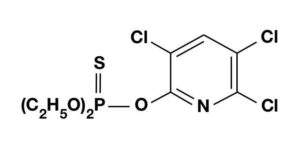The plants get the correct nutrient supply from the soil, therefore the more fertile the soil is, the more the productions will have a better yield and will be of high quality.
The fertility of the soils is maintained with proper cultivation practices and with the addition of fertilizers both organic and mineral of natural origin or synthesis.
In fact, although in the soil is always present organic substance at different stages of evolution, the crops remove many nutrients that must be replenished with external inputs.
Thus, fertilisation is an important stage for the implementation of eco-sustainable agriculture, as demonstrated by the special attention given to this phase by integrated and organic production systems. The alternative to soil fertilisation with synthetic chemicals is the use of natural mineral fertilisers and organic fertilisation. For holdings without livestock, organic fertilisation consists mainly of the purchase of manure or compost, the use of crop residues and the practice of green manure (Planting of herbaceous plants grown for the purpose of increasing the organic matter in the soil).
The Italian guidelines on integrated production give clear indications for the maintenance of good soil fertility that avoids excessive use of fertilizers. In particular, the biological method provides for the maintenance of fertility through appropriate cultivation techniques, such as rotation and green manure (see also the paragraph on cultivation techniques, and fertilization with natural or organic fertilisers, using in exceptional cases the use of other fertilisers provided for in any case by a short list in the Annex to Regulation (EC) 889/2008 laying down detailed rules for the application of Regulation (EC) No 834/2007 on organic production.
In any case, the external supply of fertilizers must be well evaluated: doses higher than necessary, in fact, can be harmful to both the product and the environment.
As regards the product, for example, an excessive availability of nitrogen can lead to a deterioration in the quality of visual, organoleptic and nutritional properties.
Otherwise, the negative impact on the environment comes from the possible pollution that can cause these substances, resulting in toxic concentrations at high concentrations.
In this sense, the main concerns are linked to the quantity of nitrogen fertilisers, in particular nitrates.
These, in fact, can easily be washed away by rain or irrigation water and transported to the lower layers, thus posing a danger to the aquifers.
Moreover, high doses may lead to an excessive accumulation of nitrates in the plant and the problem is particularly serious for those crops for which the edible product consists of green parts (salads, lettuce, etc.) or harvested in advance of the natural ripening period.
A responsible use of fertilizers therefore requires that certain quantities of macronutrients (phosphorus – P, potassium – K and nitrogen – N) are not exceeded.
In order to give the right contribution, it is desirable to prepare a fertilization plan that takes into account the actual removal and equipment, drawn up on the basis of chemical analysis-soil physics, for the purpose of estimating the availability of macroelements present and other fertility indices.
A correct distribution of fertilisers must also take into account their specific characteristics and climatic trends as laid down in the national guidelines for the agronomic practices of integrated production. The use of organic fertilizers is preferable because of the positive role that organic matter plays on the environment.
This, in fact, limits the loss of soil due to surface erosion, allows a greater capacity of the soil water retention and a reduction in consumption of energy resources and also has a positive effect on air quality due to its function of sequestration of atmospheric carbon.
It is also added the characteristic of the organic substance to gradually release the nutrients that can be assimilated from the crops, thus allowing the mineral intake not to be washed away and thus also allowing an overall reduction in nitrogen intakes.
The reduction in nitrogen fertiliser use levels also leads to a reduction in greenhouse gas and ammonia emissions (especially methane and nitrous oxide) contributing to the mitigation of climate change.
An example of organic substance for fertilizing purposes are the Olive Vegetation Waters which have a threefold advantage: agronomic (it is a fertilizer of considerable value), ecological (in the agricultural soil it is possible to recycle a very uncomfortable and polluting material) and economic (saving of chemical fertilizers, lower cost if produced on the farm).

